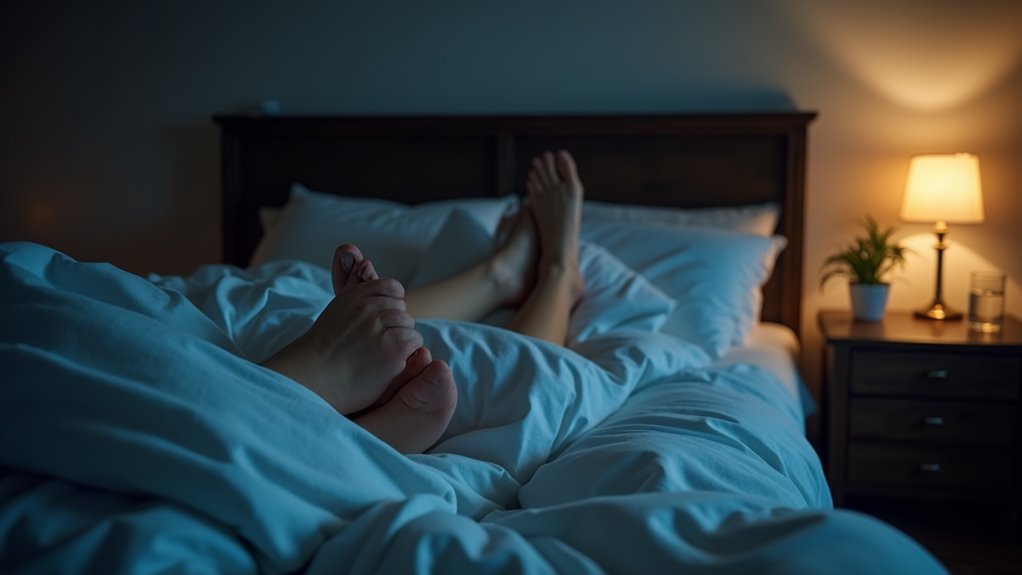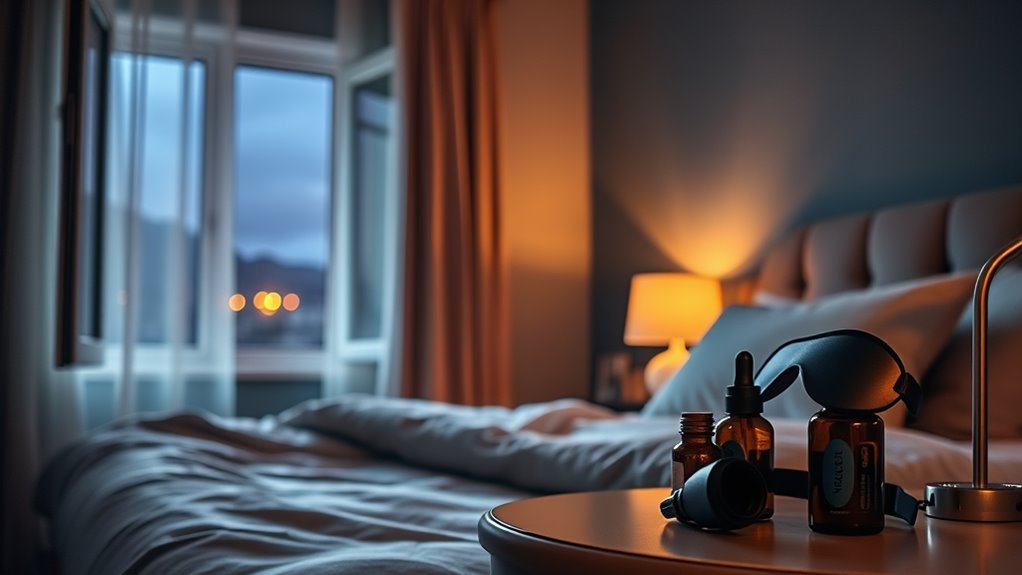Restless Leg Syndrome Keeping You Up. Try These Simple Fixes!
If you’re struggling with restless leg syndrome, you know how it can sabotage your sleep and leave you feeling drained. This condition often brings an intense urge to move your legs, particularly at night. Fortunately, there are practical solutions you can incorporate into your routine. By making a few simple lifestyle adjustments, you might find relief and enjoy better rest. So, what changes can you make to reclaim your nights?
Understanding Restless Leg Syndrome
When you find yourself struggling with an irresistible urge to move your legs, especially at night, you might be experiencing Restless Leg Syndrome (RLS).
It can feel isolating, but you’re not alone—many share this experience. Understanding RLS is the first step toward finding relief. Approximately 10% of the population struggles with RLS, highlighting the significance of addressing this condition. Regular physical activity can significantly reduce symptoms, making it a vital component of your management strategy.
You may notice that certain restless leg remedies, like stretching, warm baths, or even light exercise, help ease your discomfort.
Exploring lifestyle changes, such as reducing caffeine and alcohol, can also be beneficial. Additionally, recognizing lifestyle factors that contribute to RLS, such as irregular sleep patterns, can help you manage symptoms more effectively.
Symptoms and Triggers
Recognizing the symptoms and triggers of Restless Leg Syndrome is crucial for managing its effects on your life. You might experience an overwhelming urge to move your legs, often accompanied by uncomfortable sensations like tingling or crawling.
These symptoms typically worsen during periods of inactivity or at night, disrupting your sleep. Common triggers include stress, caffeine, alcohol, and certain medications.
Lifestyle Changes for Relief
Making simple lifestyle changes can significantly alleviate the discomfort of Restless Leg Syndrome. You might find relief by establishing a consistent sleep schedule, so your body knows when it’s time to rest. Incorporating mindfulness techniques into your routine can also help calm the mind and prepare you for sleep.
Regular exercise, like walking or stretching, can help reduce symptoms, too, as it promotes improved blood circulation which is beneficial for RLS. Limiting caffeine and nicotine, especially in the evening, may improve your sleep quality.
Creating a calming bedtime routine, such as reading or meditating, can ease your mind and prepare your body for rest. Additionally, incorporating targeted muscle stretches into your routine before bed can further enhance relaxation and comfort during the night.
Dietary Adjustments
Alongside lifestyle changes, dietary adjustments can play a significant role in managing Restless Leg Syndrome. You might want to focus on foods rich in iron, magnesium, and folate, as these nutrients can help alleviate symptoms.
Consider incorporating leafy greens, nuts, seeds, and lean meats into your meals. Staying hydrated is also crucial, so drink plenty of water throughout the day.
You may want to limit caffeine and alcohol, as they can worsen symptoms. By making these simple tweaks, you’ll not only feel better but also connect with others who share similar struggles, fostering a supportive community.
Exercise and Stretching Techniques
While managing Restless Leg Syndrome can be challenging, incorporating regular exercise and stretching techniques can significantly improve your symptoms.
Start with simple activities like walking or cycling for at least 30 minutes most days. You’ll find that moving your body helps reduce those restless feelings.
Stretching your legs before bed can also be beneficial; try calf stretches or gentle yoga poses.
You’re not alone in this journey—many have found relief through these practices. By embracing exercise and flexibility, you create a sense of belonging in a community striving for better sleep and comfort.
Let’s move together towards a restful night!
Sleep Hygiene Practices
To ensure a restful night’s sleep, it’s essential to adopt effective sleep hygiene practices.
Start by setting a consistent sleep schedule; going to bed and waking up at the same time each day helps regulate your body’s internal clock.
Create a calming bedtime routine, like reading or meditating, to signal your mind that it’s time to wind down.
Keep your sleep environment cool, dark, and quiet—consider blackout curtains or white noise machines.
Limit screen time before bed, as the blue light can disrupt your sleep.
Natural Remedies to Consider
If you’re seeking relief from Restless Leg Syndrome (RLS), exploring natural remedies can be a beneficial approach.
Many people find comfort in magnesium-rich foods like nuts and leafy greens, which may help reduce symptoms. Additionally, practicing gentle yoga or stretching before bed can promote relaxation and ease tension.
Some also turn to essential oils, like lavender, for their calming effects. Don’t overlook the power of warm baths, which can soothe your legs and prepare you for sleep.
When to Seek Medical Advice
When should you consider seeking medical advice for Restless Leg Syndrome (RLS)? If your symptoms interfere with your daily life or sleep, it’s time to talk to a healthcare professional.
Persistent discomfort, worsening symptoms, or feelings of anxiety can signal a need for help. You don’t have to face this alone; many people share your experience.
A doctor can provide guidance, explore underlying conditions, and discuss treatment options tailored to you.





